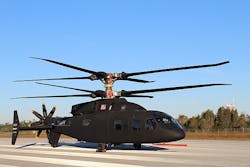US Army’s Future Vertical Lift program will transform industry, so we must get it right
WASHINGTON - It is rare when technological innovation delivers change that fundamentally reshapes military operations. Helicopters made one of these rare breakthroughs after World War II. The ability to support land operations with vertical lift aircraft fundamentally changed how militaries moved on the battlefield. However, the shape of military operations supported by today’s helicopters reflect their capabilities and limitations in terms of speed, range and lift capacity. The Army’s Future Vertical Lift efforts are designed to reshape military operations by surpassing the limits imposed by today’s systems, Andrew Hunter and Rhys McCormick report for Defense News. Continue reading original article.
The Intelligent Aerospace take:
July 13, 2020 -While Department of Defense spending remains high, the U.S. Army has its eyes on affordability for its next-gen rotorcraft as the branch looks to adopt two new helicopters simultaneously with attack reconnaissance and long-range assault aircraft. Hunter and McCormick's piece dives into the effects the Army's FVL programs will impact the industry.
Related: Bell and Rolls-Royce collaborate on next-gen VTOL propulsion systems
Related: Sikorsky-Boeing's Future Vertical Lift helicopter takes maiden flight
Jamie Whitney, Associate Editor
Intelligent Aerospace
